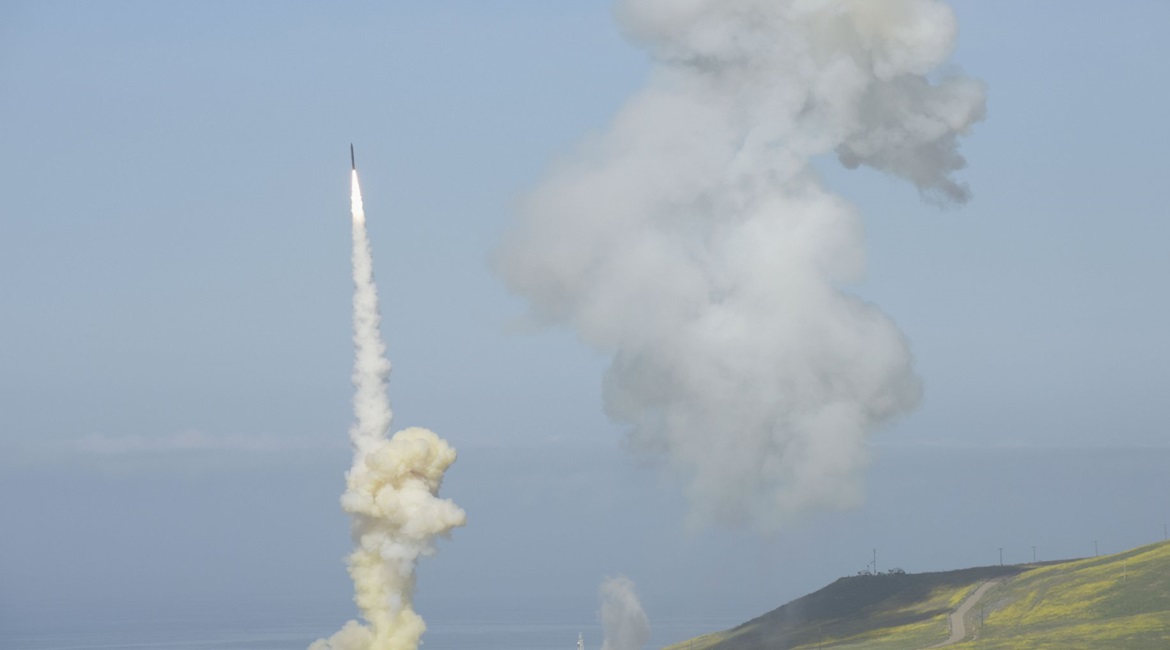
A first-ever salvo test of the US Ground-based Midcourse Defense (GMD) homeland missile interceptor system hit its target, according to the US Missile Defense Agency (MDA).
The 25 March salvo test fired two interceptors from Vandenberg Air Force Base in California against one intercontinental ballistic missile (ICBM)-class target that was launched from Kwajalein Atoll in the Marshall Islands.
“This test was the first salvo engagement of a threat-representative ICBM target by two Ground Based Interceptors (GBIs), which were designated GBI-Lead, and GBI-Trail for the test. The GBI-Lead destroyed the re-entry vehicle, as it was designed to do,” MDA said in a statement. “The GBI-Trail then looked at the resulting debris and remaining objects, and, not finding any other re-entry vehicles, selected the next ‘most lethal object’ it could identify, and struck that, precisely as it was designed to do.”

The 'trail' GBI shown launching from Vandenberg Air Force Base about 50 seconds after the ‘lead’ GBI, in the system’s first-ever salvo engagement. (US MDA)
The Pentagon shrouded this test with unprecedented secrecy, and MDA did not hold a briefing after the event, which is unusual. An unofficial video of the launch appeared to show the GBI-Trail launching about 50 seconds after the GBI-Lead. The agency said, “initial indications show the test met requirements”.
An MDA spokesperson told Jane’s the test used two three-stage GBI missiles, the GBI-Lead fitted with a Capability Enhancement II (CE-II) Block I Exoatmospheric Kill Vehicle (EKV) and the GBI-Trail fitted with a earlier-generation CE-II EKV.
Looking to read the full article?
Gain unlimited access to Janes news and more...






